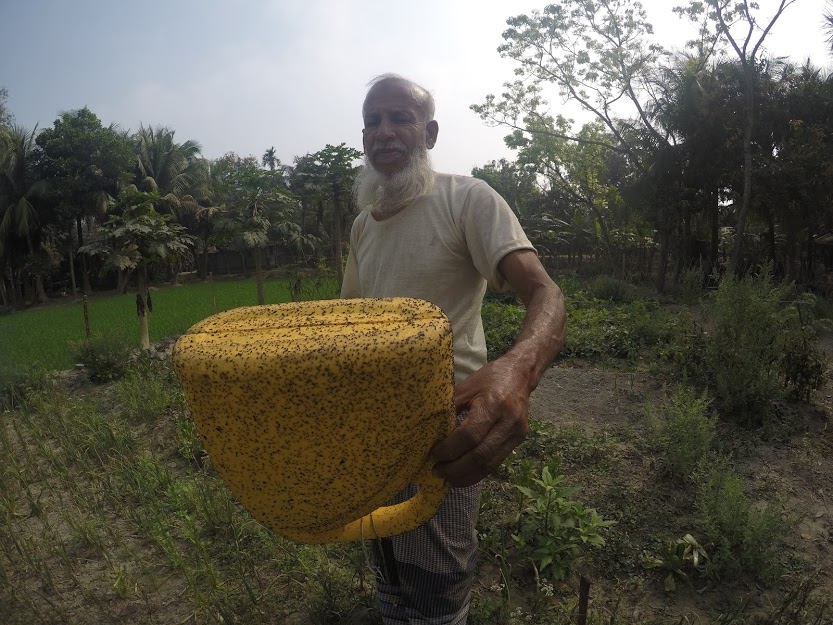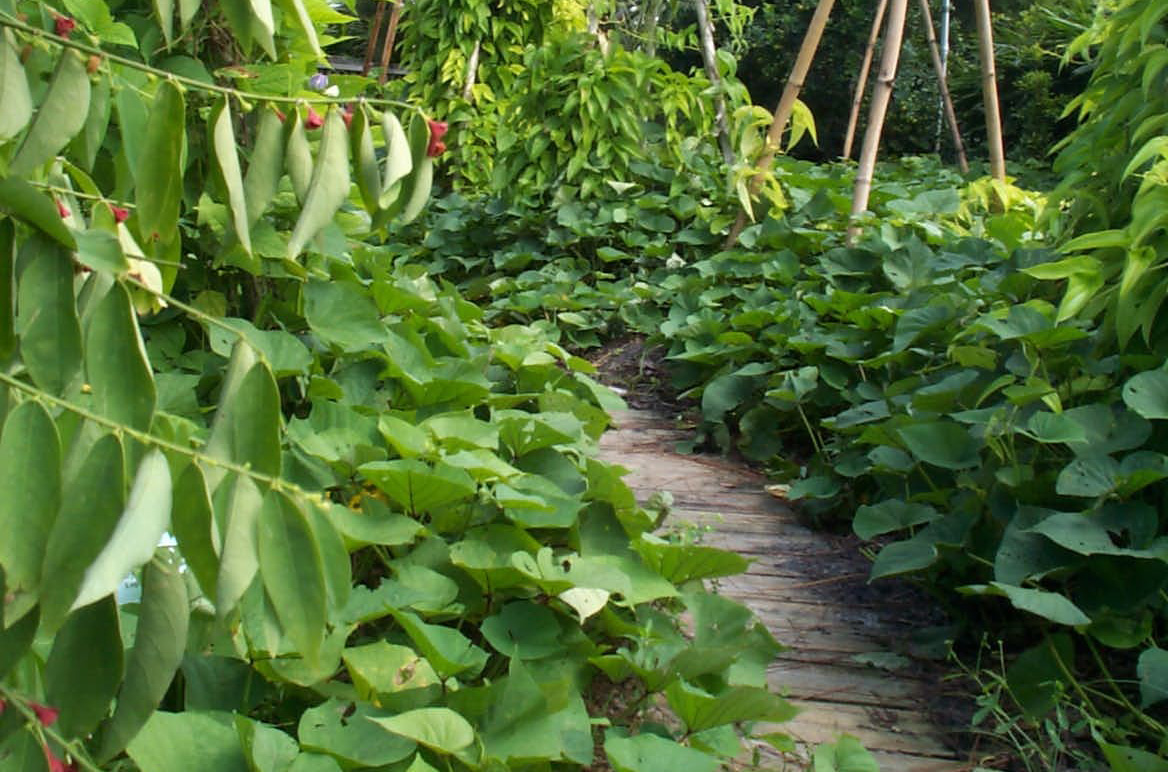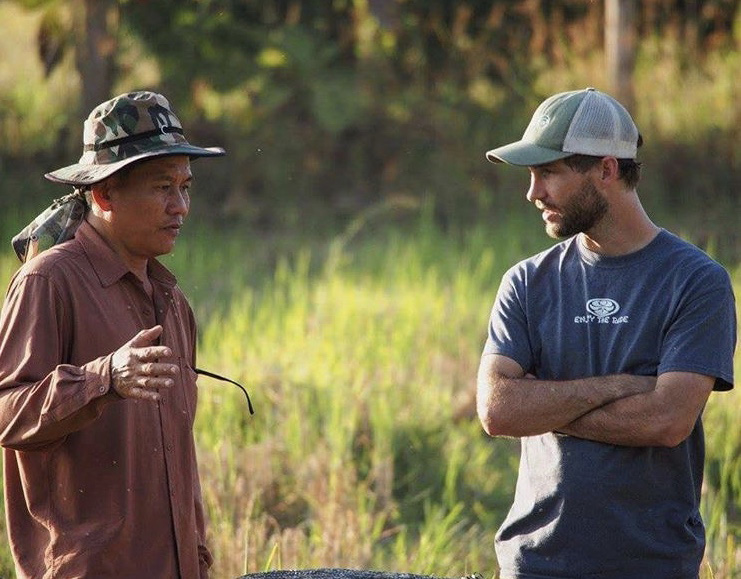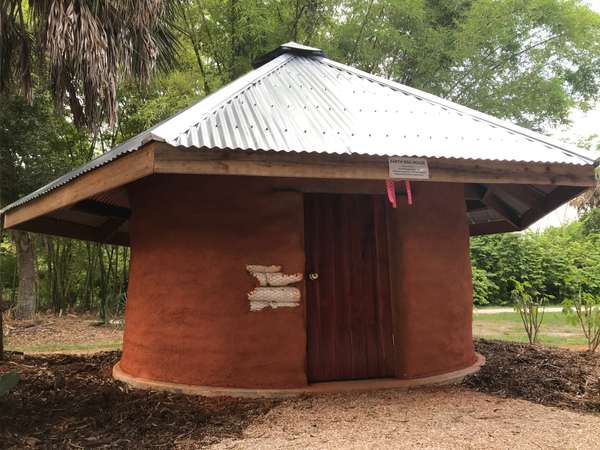Mises à jour de ECHOcommunity
Announcing the ECHO East Africa Symposium on Sustainable Agriculture and Appropriate Technology 2021-04-14
28th-30th September 2021
You are cordially invited to join us for the 6th ECHO East Africa Biennial Symposium on Sustainable Agriculture and Appropriate Technologies 2021. We hope that you will make time to gather online with us at this very important and effective event for learning, information sharing, and networking for those working and serving in the East Africa Region. Participants are encouraged to register online for a $20 registration fee and that we welcome donations from good-willed individuals to help those who cannot pay this fee.
EDN Numéro 151 Maintenant disponible 2021-04-07
Sommaire:
- Lutte contre les insectes nuisibles: les possibilités de surveillance des populations de ravageurs
- De la Banque de semences de ECHO: Apios americana
- Échos de notre réseau: Abonnez-vous aux Notes de ECHO pour l’Asie!
- Livres, sites Web et autres ressources: Analyse de Agroforestry Design ToolTM
Lutte contre les insectes nuisibles
Annie Deutsch et Stacy Swartz
Extrait:
Vous pouvez effectuer un échantillonnage actif de différentes manières. Le filet de balayage est une façon d'estimer une population d'insectes dans tout un champ. Pour fabriquer un filet de balayage simple à partir de matériaux locaux, prenez un sac en tissu de couleur claire, ajoutez un anneau métallique ferme autour de l'ouverture (30 à 38 cm de diamètre) et attachez-le à un bâton ou à une perche. Les filets de balayage fonctionnent mieux pour les cultures basses telles que le riz et autres petits grains, ou les haricots non grimpants avant la floraison et les fruits - des plantes suffisamment résistantes pour supporter les dégâts sans perdre de fruits ni trop de masse de feuilles. Les filets de balayage fonctionnent également mieux pour les insectes qui se délogent facilement des plantes.
NEW Technical Note # 97 Small-Scale Nursery Management 2021-03-30
Cultivating plants, sharing seeds and cuttings with neighbors, and seeking better crop varieties are as old as agriculture. We use the word “nursery” for places where we care for and nurture things that are precious and vulnerable, like children and plants. Creating habitats to grow healthy seedlings is an integral part of the farming cycle, an important contribution to a thriving community, and both a rewarding and challenging business opportunity.
A nursery can be as small as a farmer’s seedbed for the immediate planting of a single crop, or as large as a complex business with hundreds of species and varieties for sale to the public. This Technical Note describes important aspects of planning and running a small nursery to supply trees and other perennial plants for personal or community use. Content is targeted towards agricultural practitioners working with small-scale farmers in tropical and subtropical climates. Included in the document are comments and insights from people with extensive experience in operating tree nurseries in parts of Central Africa (Roy Danforth), Madagascar (Dan Turk), Guatemala (Dwight Carter), and Haiti/Nicaragua/Indonesia (Rafael Flores).
Asia Note #45 Now Available 2021-03-08
EDN Numéro 150 Maintenant disponible 2021-01-20
Sommaire:
- Légumes vivaces et nutrition
- De la Banque de semences de ECHO: Facteurs à prendre en compte lors du choix d'une variété de pois d'Angole
- Échos de notre réseau: Conférence internationale de ECHO sur l'agriculture 2020
- Livres, sites Web et autres ressources: Annonce de l'application mobile d'ECHOcommunity
Légumes vivaces et nutrition
Eric Toensmeier
Extrait:
Nous avons été heureux d'apprendre que les LV ont un excellent potentiel pour remédier aux carences en éléments nutritifs. Sur les 240 LV pour lesquels nous disposions de données, 154 étaient surabondantes (« très élevées » ou « extrêmement élevées ») pour au moins un élément nutritif, et souvent pour plus d'un. En fait, 23 espèces (10 % des LV pour lesquels nous avons trouvé des données) étaient surabondantes dans quatre éléments nutritifs clés ou plus nécessaires pour remédier aux carences ! Nous avons été particulièrement intéressés de constater que les arbres à feuilles comestibles étaient surabondants en plusieurs éléments nutritifs que tout autre type de LV.
Announcing the ECHOcommunity Mobile App 2020-11-19
We are excited to announce the immediate availability of the ECHOcommunity Mobile App! [January, 2021]
This free app has been developed to help you take and share resources when your work extends out beyond your internet connection.
ECHO International Agriculture Conference - ONLINE November 19th! 2020-11-02
The 2020 International Agriculture Conference will feature leading voices in various aspects of agricultural development—practitioners, scientists, and community leaders. Content will be presented in plenary and concurrent breakout sessions, with ample opportunities to network with each other, as past participants have come to know and expect.
EDN Numéro 149 Maintenant disponible 2020-10-16
Sommaire:
- L’atténuation des changements climatiques centrée sur les agriculteurs: Partie 2 sur 2
- Échos de notre réseau: Un rapport d'essai de semences - Comment des semences de ECHO ont poussé dans un jardin de saison sèche en Ouganda
- Echoes from our Network: Greffage du tamarillo et d'autres cultures de solanacées pour une résistance aux nématodes
- Livres, sites Web et autres ressources: Résumé du salon de la TA
L’atténuation des changements climatiques centrée sur les agriculteurs
Tim Motis
Extrait:
La quantité de carbone séquestrée dans les sols par les EVCC dépend, en grande partie, de la quantité de matière végétale cultivée et laissée sur le sol. Vous pouvez calculer approximativement la quantité de carbone contenue dans cette biomasse en collectant et en séchant les feuilles, les tiges et les racines d'une petite parcelle de dimensions connues, par exemple 1 mètre carré... Fujisaki et al. (2018) ont constaté que jusqu'à 36% des apports de carbone étaient convertis en carbone organique du sol. Malgré le fait que tout le carbone des plantes ne se transfère pas au sol (certains retournent dans l'atmosphère, comme expliqué dans la partie 1), les EVCC peuvent toujours augmenter la quantité de carbone stockée dans les sols. Sur un sol sablo-limoneux au Bénin, un système composé du maïs et de la fève de velours (Mucuna pruriens) a ajouté 1,3 tonne métrique de carbone du sol par ha chaque année aux 40 premiers centimètres du sol (Barthès et al., 2004).
Asia Note #43 Now Available! 2020-08-31
Featured in this AN
- Mycorrhizal Fungi - Our Tiny Underground Allies
- Tomato Grafting in Southeast Asia: A Useful Technique for Rainy Season Production
- Recent Asia Note Links
- ECHO Upcoming Events
- Subscribe to ECHO Asia's YouTube Channel
- Ways to stay connected
Une nouvelle Note technique sur les banques de semences en sacs de terre 2020-08-13
Télécharger TN#96 (PDF) Lire TN#96 en ligne
La conservation des semences est un sujet important dans le travail de développement agricole, et ECHO a publié de nombreux articles sur divers aspects des techniques de stockage des semences, des technologies appropriées, et du partage des semences. ECHOcommunity.org héberge diverses ressources liées à la construction avec des sacs de terre, au stockage des semences, et à d'autres sujets connexes. Le dernier ajout à notre répertoire est une Note technique «Earthbag Seed Bank [Banque de semence en sacs de terre]» qui propose une procédure pas à pas dans l’aménagement d'un environnement de stockage de semences résilient pour une banque de semences communautaire.
Outre les informations techniques sur les avantages des structures en sacs de terre, cette Note technique fournit des instructions de construction détaillées, des astuces et des conseils pour la conception de votre propre banque de semences en sacs de terre, ainsi qu'un diaporama en ligne de divers aspects du processus de construction entrepris sur le campus de ECHO en Floride de notre propre structure.
Enfin, la section «Autres lectures» offre une foule de ressources pour déterminer si une banque de semences en sacs de terre est appropriée à vos besoins et à votre contexte. Comme toujours, ECHOcommunity Conversations est un excellent endroit pour discuter avec les autres membres du réseau de toutes les réflexions et questions que vous pourriez avoir sur les banques de semences en sacs de terre, les banques de semences communautaires ou d'autres sujets!









